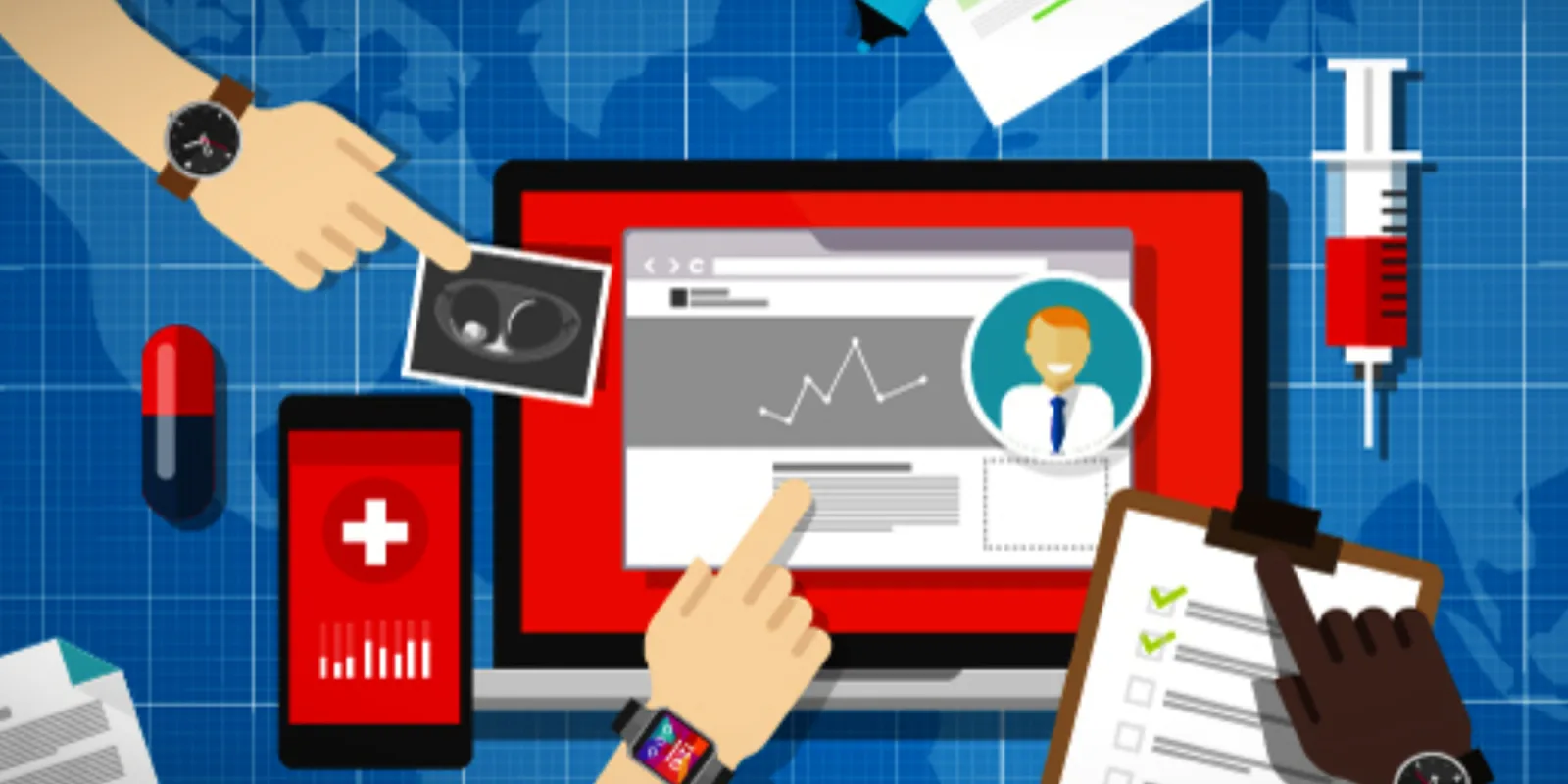 The purpose of clinical documentation is to efficiently communicate critical data to peers in a readable fashion while meeting compliance and billing requirements. This documentation should not represent a data dump.
The purpose of clinical documentation is to efficiently communicate critical data to peers in a readable fashion while meeting compliance and billing requirements. This documentation should not represent a data dump.
The EHR is leveraged to improve care. There can be no question that physicians continually increase their dependence on technology as we enter the digital age and are deluged with data. Accessing the right information at the right time is essential to providing the most appropriate care possible. None of us want to go back to the day of needing to go to the library or leafing through a textbook to find information. Nor do we want to be bombarded with a plethora of irrelevant alerts. Creating a system that allows for quality care should be the mission of any electronic health system.
Is technology the solution or the problem? Many physicians cite technology as the root of all evil. Many of these physicians are bombastic whiners. Ask them if they want to go back to paper and they will look aghast. Together we need to work on actionable solutions.
Team-based care should mean physicians, nurses, appropriate therapists, not coders and insurance companies. Clinical notes should be a collaborative effort, not a repetitive regurgitation replete with copy and waste.
Progress notes on paper were often scribbled and illegible. They did, however, provide the physician with a clue as to what they were thinking that day, what medical decisions were made, and what the plan was for care. One could argue today’s notes are illegible in a different way. Distinguishing copied text from automatically added templates from thoughtfully typed thoughts or even consciously added macros is difficult. Hundreds of words provide a progress note where once “ No 𝛥, VSS, ↑ ambulation, home tomorrow” sufficed.
The same note today would include an abundance of repetitive data, flow sheets and labs that are more appropriately viewed in other pages of the EHR for context. In the notes of old, we would review the vitals graph, but not feel compelled to repeat all of that data in our note. Nor did we feel a need to repeat laboratory results done days in the past. None of that pertains to today. Indeed, the redundant date obscures the important comments. With the advent of tools to add clinical data to our notes, we have created a monster in the form of “note bloat.” Beyond being inconvenient, this can be a patient safety issue as one can’t see the forest for the trees.
A physician helping implement Epic in the Netherlands related a vignette to me. He was demonstrating “NoteWriter,” Epic’s functionality that allows the clinician to click boxes and generate a prose description of a complete physical exam. The new doctor said, “I don’t understand.” The Epic physician started again to demonstrate how clicking boxes created a note. The doctor interjected: “I understand what your system does, but WHY? I just write ‘Normal Exam.’ Don’t you know what that means???”
Chris Longhurst and Lance Downing reported that the average number of characters in an ambulatory note in the US was often an order of magnitude more than that of notes internationally.
Adding additional verbiage reiterating what a normal exam is leads to errors in documentation, not better documentation. No one types out a complete physical for every patient. And even the most compulsive physician will occasionally miss an edit in a template. How often have we seen a full review of systems proclaim no cough, no shortness of breath despite the chief complaint and history intricately describing the productive cough? Is there any study that shows improved outcomes (other than the outcome of remuneration and decrease claims denial) from putting in a twelve point review of systems as opposed to writing the ROS negative except as listed above? Wouldn’t we more accurately reflect the patient symptoms with a patient-generated review of systems? Why does it need to be repeated in our note at all when we have an audit trail proving we looked?
Certainly, some technical advances address the redundant data and copied forward issues. Functionality exists that puts copied data in gray. On the surface, this might seem an improvement. By employing this tool, one can easily see what new information has been added to the note and thus be spared wading through gibberish. How absurd is it that the note contains huge portions to be filtered out by the reader? Why include it in the first place? Notes are now written to meet coding and compliance mandates, real and perceived.
Oddly, many find workarounds to communicate. There is the movement towards APSO notes, not because they are easier to write, or reflect a physician’s thinking process, but because they allow a physician to see what matters. Much of this documentation should not be in the physician note. The data exists in other parts of the chart. Indeed, the data is usually best reviewed in the portion of the EHR designed to house it: be it vitals or lab or imaging. In those sections of the chart, one can see what else was ordered, the sequencing and trends. By encouraging or mandating inclusion in a note, one risks physicians (especially trainees) using the note as chart review and missing important nuances of the patient’s care and input from other members of the care team.
As a discipline, the notion that if it isn’t documented in a progress note it wasn’t reviewed or didn’t happen needs to be dispelled. Audit trails, if not “mark as reviewed” buttons, are more than sufficient to prove the appropriate data was put before the provider’s eyes.
Are there particular recommendations regarding "the purpose of notes” that could be addressed to the EHR WG (as we attempt to describe standards for EHR system functionality), to regulators (in terms of their requirements for data capture and reporting), to payers (in terms of their requirements for payment: pre-authorization, claims, claims substantiation), to providers (in terms of their operations and policies), to EHR/PHR/HIT system developers (tying back into the EHR WG effort to describe EHR system functionality), to EHR system implementers (in terms of how best to configure systems, information flows, data capture and review, reporting), to professional societies (in terms of their specialty focus/guidance), to consultants…?
Some recommendations that come to mind: Context-based or review-based approach instead of a documentation-based paradigm. Improving usability of documentation.
Rules themselves need to be changed. Address the framework that has created the rules under which we operate today. The clinician note should be distinct from the coding and compliance piece, with a focus on the patient narrative, pertinent exam findings, and medical decision making. Our education has taught us how to extract the pertinent narrative from the patient and to execute medical decision making. This needs to be in our note. Time spent reviewing normal data such as labs and imaging is captured by the system and serves no purpose being reiterated. The EHR can provide a report that Dr. X reviewed labs / imaging / old notes and spent a total of x minutes in the chart including prior to, during and after the visit. Audit trails, if not “mark as reviewed” buttons are more than sufficient to prove the appropriate data was put before the provider’s eyes. Extracting useful information from the note is far more efficient when not obscured by useless information.
We must not perpetuate a culture of overwrought and overworked providers entering inaccessible information which makes getting useful information out impossible. The solutions lie not only in our own workflows and documentation habits but also in our willingness to participate in national efforts to change billing and compliance rules.
The U.S. Department of Health and Human Services (HHS) issued a draft strategy designed to help reduce the administrative and regulatory burden on clinicians caused by the use of health information technology (health IT) such as electronic health records (EHRs). They have asked for public comment, and I encourage you to let your voice be heard. The public comment period on the draft Strategy on Reducing Regulatory and Administrative Burden Relating to the Use of Health IT and EHRs ends on Monday January 28, 2019 at 11:59:59 PM ET.
Image by Bakhtiar Zein / Shutterstock
Lisa Masson, MD, is a board-certified primary care physician in Los Angeles. Her passion for primary care motivated her to take on an active role in clinical informatics. She is a 2018–19 Doximity Author and a proud mother of three daughters. The opinions expressed are her own, and do not necessarily reflect the opinions of her employer.







